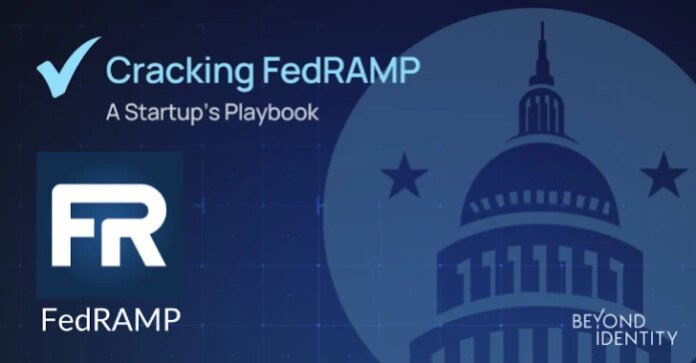For organizations eyeing the federal market, FedRAMP can feel like a gated fortress. With strict compliance requirements and a notoriously long runway, many companies assume the path to authorization is reserved for the well-resourced enterprise. But that’s changing.
In this post, we break down how fast-moving startups can realistically achieve FedRAMP Moderate authorization without derailing product velocity, drawing from real-world lessons, technical insights, and the bruises earned along the way from a cybersecurity startup that just went through the process.
Why It Matters
Winning in the federal space starts with trust—and that trust begins with FedRAMP. But pursuing authorization is not a simple compliance checkbox. It’s a company-wide shift that requires intentional strategy, deep security investment, and a willingness to move differently than most startups.
Let’s get into what that actually looks like.
Keys to a Successful FedRAMP Authorization
1. Align to NIST 800-53 from Day One
Startups that bolt on compliance late in the game usually end up rewriting their infrastructure to fit. The better path? Build directly against the NIST 800-53 Rev. 5 Moderate baseline as your internal security framework—even before FedRAMP is on the roadmap.
This early commitment reduces rework, accelerates ATO prep, and fosters a security-first mindset that scales. Additionally, compliance is often a must have for organizations to do business with mid to large enterprises so it’s more than a checkbox, it’s a business enabler. Here at Beyond Identity, when we say “secure-by-design” platform, a foundational component is alignment to strict compliance frameworks from the start.
2. Build an Integrated Security Team
FedRAMP isn’t just an InfoSec problem—it’s a team sport. Success requires tight integration across:
- Compliance-focused InfoSec leads who understand the nuances of FedRAMP controls
- Application security engineers who can embed guardrails without bottlenecking delivery
- DevSecOps teams to operationalize security across pipelines
- Platform engineers responsible for both cloud posture and deployment parity
Cross-functional collaboration isn’t a nice-to-have—it’s how you survive the inevitable curveballs.
3. Mirror Your Commercial and Federal Architectures
Attempting to run a separate product for the federal market? Don’t.
Winning startups keep a single software release chain, with identical configurations and infrastructure across both environments. That means:
- No federal-only forks
- No custom hardening outside the mainline
- One platform, one set of controls
This approach dramatically reduces technical drift, simplifies audits, and ensures your engineers aren’t context-switching between two worlds.
Scrutinize the Business Case
FedRAMP isn’t cheap. Initial investments often exceed $1 million, and timelines can stretch beyond 12 months. Before you start:
- Validate the market opportunity—can you actually win federal deals?
- Confirm executive sponsorship—FedRAMP requires top-down alignment
- Look for 10x return potential—not just for the cost, but for the time and energy involved
This isn’t a growth experiment. It’s a long play that demands conviction.
Pick the Right Partners
Navigating FedRAMP alone is a losing strategy. Choose external vendors carefully:
- Ask for customer references with successful FedRAMP delivery
- Watch for predatory pricing—especially from Third Party Assessment Organizations and automation tools
- Prioritize collaboration and transparency—your partner becomes an extension of your team
Cut corners here and you’ll pay for it later—in both delays and trust.
Build Internal Muscle
No external vendor can replace internal readiness. You’ll need:
- Security architecture skills with depth in cryptography, PKI, and TPMs
- Ops maturity to manage change control, evidence collection, and ticketing rigor
- Strong program management to coordinate vendors, auditors, and internal stakeholders
- Team training—FedRAMP has a steep learning curve. Invest early.
FedRAMP reshapes how you ship, with slower velocity, higher overhead, and the need for tight cross-functional alignment. While the impact is real, the long-term payoff is disciplined security and process maturity that goes well beyond compliance.
The Toughest Challenges
Every FedRAMP journey hits turbulence. Some of the hardest problems include:
- Interpreting FedRAMP Moderate controls without clear guidance
- Defining authorization boundaries across microservices and shared components
- Operationalizing DevSecOps gates that enforce security without stalling builds
- Choosing the right tools for SAST, DAST, SBOM, and SCA—and integrating them
Don’t underestimate these. They can become critical blockers without careful planning.
Achieving FedRAMP at startup speed is possible—but only with ruthless prioritization, integrated security culture, and a deep understanding of what you’re signing up for.
If you’re considering the journey: start small, move deliberately, and commit fully. The federal market rewards trust—but only for those who earn it.
Beyond Identity is a FedRAMP-moderate identity and access management platform that eliminates identity-based attacks. Learn more at beyondidentity.com.







